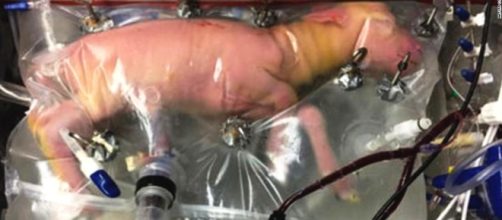Scientists and doctors at the Children's Hospital of Philadelphia have now successfully created an artificial womb that mimics the function of natural mammalian wombs. The group was able to grow several premature lamb fetuses and bring them to term using the new technology.
Reasons behind the project
According to the studies, the main cause of death among babies is due to Premature Birth. In some cases, development of certain organs is halted the moment the baby is taken out of its mother's womb. Lungs for example, completely stop developing once the baby takes its first breath.
For this reason, premature babies end up with lifelong disabilities and complications due to their underdeveloped organs.
In the US, 10 percent out of all the babies that are born are born prematurely. The annual medical care cost to sustain these cases are estimated to be around $43 billion. The team that created the artificial womb hopes to cut down on the cost and eliminate the problem of premature birth with their new device.
Early stages of development
The team was able to bring to term several fetuses inside the sterile and computer-controlled environment of the artificial womb. The "Bio Bags" mimicked several functions of a natural womb, including a pipe that acted as an umbilical chord that supplied the fetus with oxygen and other nutrients.
The technology is still under development, but the team hopes to start human trials in three to five years.
A better solution
The new artificial wombs are far more superior than incubators as they allow fetuses to continue their development without interruptions. They also protect the fetus from infections and allow the doctors to fully control the environment to suit each particular need. The device also mimics placenta by utilizing an oxygenator device that supplies oxygen based on the heartbeats of the fetus.
Other potential use
While it is still probably decades away from being possible, doctors may soon be able to grow an entire human using a more advanced version. This may eliminate the need for surrogate mothers and would be greatly beneficial for couples who are unable to conceive naturally.
Medical technology would, of course, need to drastically improve, but the new progress seems to be promising. Several of the fetuses that were grown unfortunately ended up being euthanized for further studies, but one of the lambs was kept alive and grown. The oldest test subject is currently now a one-year-old healthy baby lamb.


